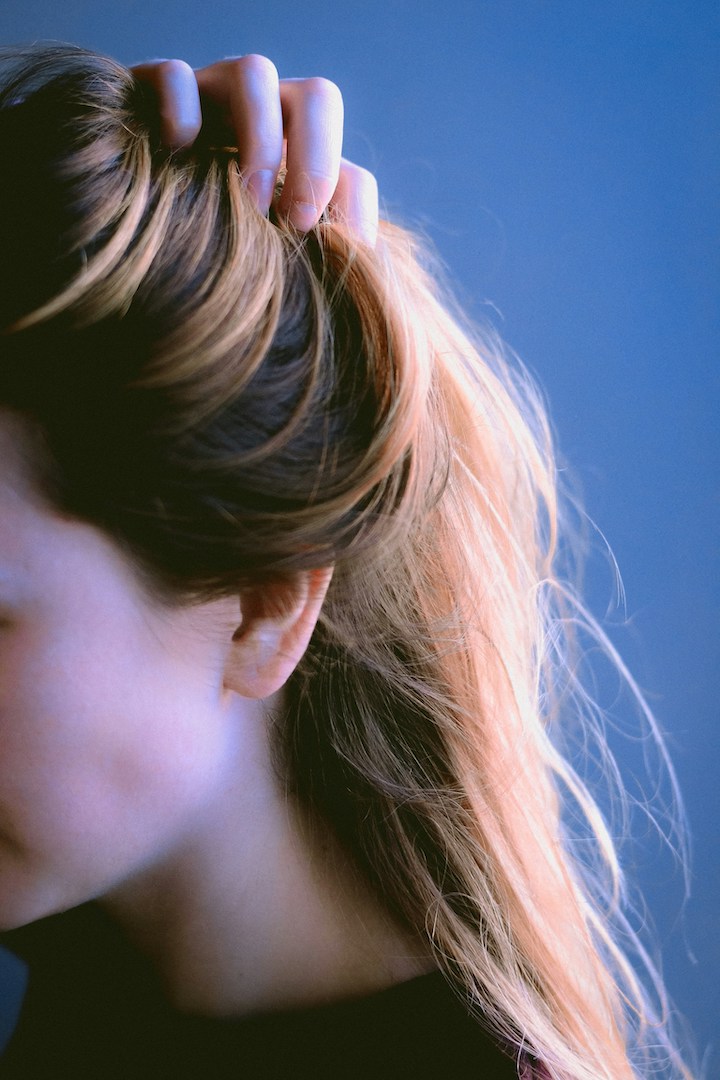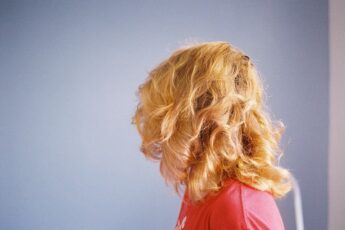You know that feeling when your hair just isn’t acting right? It feels dry, stiff, or even crunchy—like no matter what you do, it doesn’t want to behave. That might be your hair waving a red flag. And believe it or not, too much of a good thing—like protein—could be the problem.
Let’s talk about something that doesn’t get enough attention: hair protein overload signs.
Most people hear “protein” and think strong, shiny hair. And yes, protein does help with that. But too much of it? That’s where things start to fall apart—literally.
In this guide, we’ll go through what protein overload actually is, how it happens, what to look out for, and what to do if it’s already happening. I’ll also show you how to get your hair back to its softer, more balanced self without stressing about it.
So let’s dig in.
Table of Contents
Key Takeaways
- Protein overload happens when you use too much protein without enough moisture.
- Signs include stiff hair, breakage, dullness, and rough texture.
- Fix it by removing protein from your routine, clarifying, and deep conditioning with hydrating products.
- To avoid it in the future, read labels, avoid trends, and treat your hair based on how it feels—not what worked for someone else.
- It’s not permanent. Be patient, hydrate, and your hair will come back to life.
What Is Protein Overload in Hair?
Think of your hair like a sponge. It needs the right mix of protein and moisture to stay healthy. Protein gives it strength and structure. Moisture gives it softness and flexibility. But when the protein part takes over? That’s when the balance tips—and your hair can start to feel like straw.
Protein overload happens when your hair gets more protein than it can handle. And instead of making your strands stronger, the protein builds up, hardens the hair shaft, and leaves it brittle. So yes, even though protein is essential, you don’t want to drown your hair in it.
The hard part? A lot of people don’t realize they’ve gone overboard. Especially if the product says “strengthens” or “repairs,” it sounds like something you should be using all the time. But it all depends on what your hair actually needs—not just what the bottle says.

Why It Happens
There are a few common reasons protein overload sneaks in. Here are the biggest ones:
- You’re using too many protein-based products – This includes shampoos, conditioners, masks, and leave-ins. When they all contain protein—even in small amounts—they pile up fast.
- You’re applying protein treatments too often – Once a week might sound like a good idea, but for most hair types, that’s way too much.
- You’re not balancing with moisture – If you’re adding protein but skipping out on hydrating treatments, your hair ends up stiff and dry.
- You’re treating your hair like someone else’s – What works for your friend may not work for you. Especially if their hair type, porosity, or routine is different.
Also, some hair types—especially low porosity—are more prone to protein buildup. That’s because the cuticle layer is tightly packed, making it harder for moisture to get in but easier for protein to sit on top and stay there.
Also Read: The Ultimate No-Nonsense Guide to Mastering the Hair Color Level System
How to Know If You’re Dealing With Protein Overload
Here’s the part you’re probably most curious about: how do you know if protein overload is the issue? These are the most common hair protein overload signs you should be watching for:
Hair Feels Dry and Straw-Like
Not just a little dry—this is that weird, scratchy, almost squeaky feeling. You run your fingers through it and it feels rough, like it’s lost all softness.
Stiffness or Crunchiness
If your strands feel like they’ve been sprayed with too much hairspray (even when they haven’t), that stiffness could be a big clue.
Breakage Everywhere
This isn’t the kind of shedding that happens from the root. This is snapping—tiny broken hairs all over your shirt or comb.
No Elasticity
Gently stretch a strand of wet hair. If it breaks instead of stretching a bit and bouncing back, that’s a red flag.
Dull, Lifeless Hair
Even with your usual routine, the shine disappears. Your hair looks flat and tired.
Tangles That Come Out of Nowhere
You detangle, moisturize, and still end up with knots? That might be because your hair isn’t flexible anymore.
Hair Repels Water
When you wash your hair, does it feel like water just runs off instead of soaking in? That could mean too much protein has sealed the strand too tightly.
If you’re nodding along to a few of these, there’s a good chance protein overload is what you’re dealing with.
Protein Overload vs. Dry Hair — What’s the Difference?
Here’s where it gets a little tricky. Protein overload can look a lot like regular dryness—but they’re not the same.
Dry hair usually feels light and flyaway. It’s thirsty. It soaks up deep conditioners and oils like a sponge. When it gets moisture, it bounces back.
Protein-overloaded hair, on the other hand, feels heavy, stiff, and dull. And it doesn’t improve much when you add more oils or butters—it actually resists them.
So if you’ve been deep conditioning with all the right products and your hair still feels dry, it might not be moisture that’s missing. It might be that there’s too much protein crowding things out.

What You Can Do Right Away
So what do you do if these hair protein overload signs sound way too familiar?
Breathe. Don’t panic. This can be fixed. Here’s how to ease your hair back into balance:
Stop All Protein Treatments (for now)
Go through your products and set aside anything with words like “strengthening,” “rebuilding,” “keratin,” “collagen,” or “amino acids.” Even your leave-in conditioner might be adding to the problem.
Use Moisture-Rich Products Only
Reach for conditioners and masks that focus only on hydration. Look for ingredients like aloe vera, honey, glycerin, coconut water, and panthenol.
Clarify Gently
Use a gentle clarifying shampoo to remove excess protein buildup. Don’t go too harsh or too often—once is usually enough.
Deep Condition Weekly (With No Protein)
Stick with hydrating deep conditioners that do not include protein. Focus on restoring softness.
Be Patient
It might take a couple of weeks to feel the difference, but your hair will slowly start to feel more like itself again. Don’t rush it or try to force results.
You don’t need to start over or chop off your hair. Just focus on listening to how your strands feel and treating them gently.
How to Avoid Protein Overload in the Future
Once your hair is back to normal, here’s how to keep the balance going:
- Check your product labels – Even if it doesn’t say “protein” on the front, the back might tell a different story. Look out for hydrolyzed proteins, keratin, silk protein, wheat protein, etc.
- Don’t over-treat – Protein treatments are great every once in a while, especially after heat damage or coloring. But using them weekly when your hair doesn’t need them is a no-go.
- Pay attention to your hair’s response – If your hair feels softer, bouncier, and more flexible after a treatment, you’re on the right path. If it starts to feel stiff or dull, it might be time to cut back.
- Moisture should always be part of your routine – Even strong hair needs hydration to move, stretch, and shine.
Your hair doesn’t need a trend. It needs what actually works for it. The only person who can figure that out… is you.
Also Read: The Real Hair Botox Benefits (The Basic That No One Explains Clearly)
When It’s More Than Just Products
Sometimes, the problem goes deeper than what’s in your bottle.
Your diet, stress levels, and overall health play a big role in how your hair reacts. If you’re noticing the same dryness or brittleness coming back again and again, even after switching products, take a step back and look at your habits.
Are you drinking enough water? Eating enough healthy fats and proteins? Getting good sleep? Even your stress hormones can throw your hair off balance.
It’s all connected. And your hair can be one of the first places to show it.

Conclusion
Here’s the truth: your hair’s not “bad.” It’s just trying to tell you something.
If you’ve been seeing the signs—dryness, stiffness, breakage, dullness—it might be time to pause and check if protein overload is the real culprit. The good news? It’s fixable. You don’t need to throw out your whole routine. You just need to find that sweet spot between strength and softness.
Your hair talks. You just have to listen.
Frequently Asked Questions
How long does it take to fix protein overload?
Most people see improvement within 2–4 weeks after switching to moisture-only products and avoiding protein. But it depends on your hair type and how much buildup you’re dealing with.
Can low porosity hair get protein overload easily?
Yes. Low porosity hair doesn’t absorb product easily, so protein can sit on the outside and build up. If your hair is low porosity, use protein treatments sparingly.
Is it okay to use leave-in conditioners with protein?
Only if your hair needs it. If your hair feels strong, stiff, or brittle, skip protein for a while. Use leave-ins with hydrating ingredients instead.
Will cutting my hair help fix protein overload?
Only if the ends are badly damaged. Most of the time, you don’t need to cut your hair. Focus on moisturizing and clarifying first.



